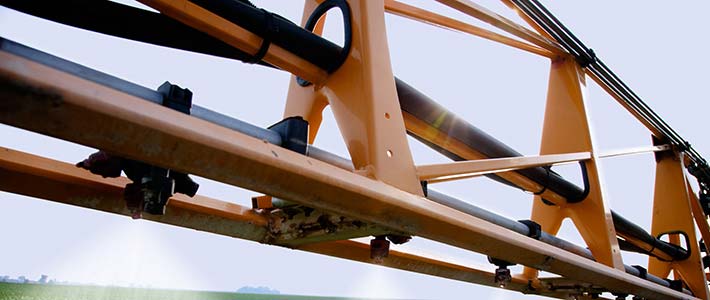The recent rains will cause a lot of you to pause for a bit, and then hit it with everything you got. During this breath, pause and think a bit about what happened in this last growing season. You have an opportunity to map out some of your production problems and develop a strategy to manage these problems in the future.
The three amigos – Sudden Death Syndrome (SDS), Brown Stem Rot (BSR) and White Mold (WM) – all popped up across Minnesota during August. The three are often confused by farmers as they share foliar symptoms.
All three are more problematic as Soybean Cyst Nematode (SCN) levels increase, all three are soil/plant residue borne. Cool wet conditions at infection favor the pathogen, and, like my relatives headed to the ice cream churn, by the time you see foliar symptoms of any of the three, the damage is pretty much done. There is little you can do about them for this year’s crop. However, it is a fine time to map them out and get ready for the future.
Cadophora gregata, the causal agent for BSR, infects soybean plant roots during the early vegetative stage, and causes interveinal browning of the leaf, followed by necrosis. Final diagnosis will happened after one splits the bottom stem lengthwise, and the tell-tale browning of the pith and vascular tissue is found. Using both SCN and BSR resistant soybean varieties has proven to be the most successful management technique. Proper tillage (destroy the soybean residue) and rotating to a nonhost crop will reduce pathogen levels.
Fusarium virguliforme, the causal agent for SDS, infects the soybean plants roots during the early vegetative stage, and produces a toxin that causes interveinal browning of the leaf, followed by necrosis. Final diagnosis will happen after one splits the bottom stem length, and the pith is a milky white, with a milky-brown discolored cortex. Frequently roots will be rotted. There are no true SDS resistant soybean varieties; however, some varieties have been proven to be partially resistant. Like BSR, SCN resistant varieties should be used. Most commercially available seed treatments, and all foliar-applied fungicides, are not effective in controlling SDS. Be sure to confirm your selected seed treatment possesses known efficacy. Rotation to a nonhost crop will reduce pathogen levels, however, many crops, specifically corn and many edible crops, are hosts for this pathogen. Long term rotation (4+ years) to a small grains and/or alfalfa crop has proven most successful in reducing pathogen levels.
Sclerotinia sclerotiorum, the causal agent for white mold, spores infect the soybean flowers starting at R1 growth stages. Foliar symptoms are formation of gray-green tissue between the major green veins. Infected leaves eventually die and turn brown, but stay attached to the stem. The presence of black sclerotia and white mycelial growth (aka mold) on the basal stems are the final step in diagnosis. Properly timed foliar fungicide applications can prove effective in managing this pathogen. Applications at R4 or later are rarely effective. There are no true WM resistant soybean varieties, but there are different tolerance levels. Rotation to a nonhost grass crop can reduce pathogen numbers. However, weed control in these grass crops are critical as many broadleaf weeds are hosts for this pathogen.
What can be done about the three amigos? Right now, not a lot. According to the U.S. Department of Agriculture (USDA), Minnesota soybeans (as of 10/1/17) are at 82 percent leaf drop and 13 percent of the acres harvested. During this little weather-dependent break, you can make sure the disease impacted areas are mapped and start developing a plan to manage these diseases in the future. Growers should also consider harvesting fields affected by any of the three amigos toward the end of the season to control soil and residue movement off site. One thing we do know, if you have the disease on that spot this year, eventually the three amigos will ride again.
Just remember you’re the one paying the toll.
David Kee is the director of research at Minnesota Soybean. He can be reached at david@mnsoybean.com or 507-388-1635.







